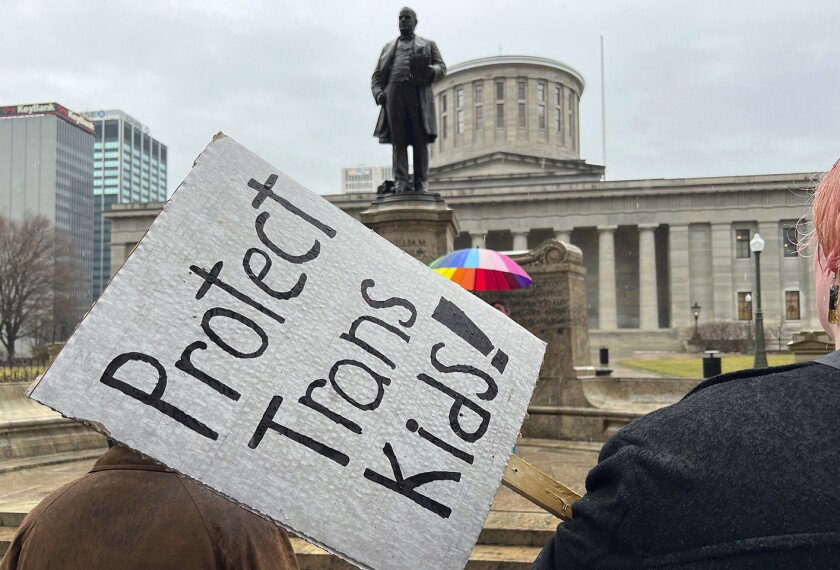Bureaucratic red tape and inertia in some school districts are keeping thousands of poor children from receiving the tutoring services guaranteed to them under the federal No Child Left Behind Act, a coalition of private tutoring providers contends.
Four years into the federal law, which requires free after-school tutoring for low-income children in low-performing schools, providers of those services mostly blame districts for the lack of widespread participation among eligible children.
To back up those complaints, the Education Industry Association last week released results from a survey of providers, who reported that getting permission from districts to offer tutoring on school campuses was one of the most common barriers to enrolling children.
That complaint came mostly from small tutoring providers, who said that large providers have more leverage with districts to get access to schools and can better afford fees that some districts may charge for the use of school buildings. Despite the concern, more than half the providers polled reported that they tutor students at the children’s school sites.
A majority of providers also reported that districts do not offer timely or clear enough notification to parents whose children are eligible for the services. The law requires districts to notify parents when their children are eligible.
But one local official said last week during a meeting on Capitol Hill hosted by the association that his district strives to make it as easy for parents as possible. Other agencies involved with overseeing the program have complicated matters, he said.
Fred Cusimano, who oversees the tutoring program for the Baltimore schools, said that when his 87,000-student district sent out a one-page letter last year to notify parents whose children were eligible for the help, state education officials asked the district to rewrite it.
“We were chided last year by the state department that our letter was too simple,” Mr. Cusimano said. “They sent us a three- to four-page mock-up of what the letter should be.”
In a new survey, providers of supplemental educational services reported the qualifications of their instructors.
*Click image to see the full chart.

SOURCE: Education Industry Association
In the 435,000-student Chicago public schools, demand is actually outstripping resources. Roughly 200,000 students are eligible for the free tutoring, Elizabeth F. Swanson, the director of after-school and community-school programs, said in an interview. Of those, 43,000 students enrolled for tutoring at the start of this school year.
Ms. Swanson credits the district’s aggressive notification process, which involves principals in informing students and families that they are eligible for services, for the district’s relatively high participation rate.
The survey on “supplemental educational services,” and the meeting in Washington, were meant to raise awareness among federal lawmakers as they begin debating the reauthorization of the law, scheduled for next year.
The association enlisted Eugene W. Hickok, who served as the U.S. deputy secretary of education during the creation and early years of the law, to help get their message out.
The Washington-based association, a trade group that represents a range of private-sector education businesses, commissioned the survey, and the independent American Institutes for Research analyzed and reported the results from 216 respondents.
“There’s a feeling that providers are being thwarted from carrying out a program that is required under the law,” said Jeffrey Cohen, the president of Baltimore-based Catapult Learning, a provider that offers tutoring in 75 school districts. “We see [tutoring] as the gap-filler and immediate relief to kids who are in failing schools that must be fixed. It’s not right to sit by and let kids fall by the wayside.”
No Consequences?
Under the No Child Left Behind law, low-income students who attend schools that have failed to meet academic-performance targets for three straight years are eligible for free tutoring from public or private providers that have been approved by state education officials. Districts are required to set aside a portion of the federal Title I money they receive for disadvantaged students to pay for the tutoring and school choice provisions of the law.
During the 2003-04 school year, roughly 226,000 students participated in a free tutoring program, out of nearly 2 million who were eligible nationwide, according to draft figures from the U.S. Department of Education. That was nearly double the participation the previous year, when the department reported that 116,624 students were in tutoring.
In a survey last year, the Washington-based Center on Education Policy found that only about 18 percent of all eligible students nationwide received the free tutoring in the 2004-05 school year.
In addition to state-certified instructors, providers are using tutors with varying educational backgrounds.
*Click image to see the full chart.

SOURCE: Education Industry Association
Those participation rates, providers and advocates for outside tutoring contend, are evidence that the law needs tweaking and better enforcement.
“I’m not aware of any real statutory consequences for districts who don’t do a better job,” said Steven Pines, the executive director of the Education Industry Association. “I think there could be financial incentives or other incentives in the law that would improve the participation of school districts and utilization of these resources.”
Holly A. Kuzmich, a deputy assistant secretary for policy at the Education Department, said federal enforcement is limited, with 15,000 school districts. She suggested that state education officials are better positioned to monitor whether districts are complying.
“Our role is not a huge one in this area, except for making sure that people play by the rules,” Ms. Kuzmich said during the meeting on Capitol Hill.
“We don’t have the authority to withhold funds,” she said. “We obviously need to do a better job of convincing districts that this is in their best interest.”





